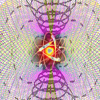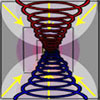The Atom WAS Considered A Vortex By Mainstream Scientists
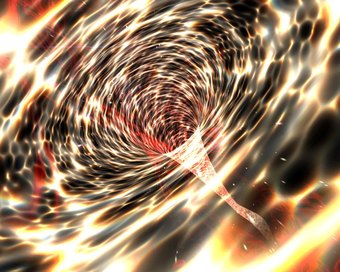 History of the Atom as A Vortex – What Happened?
History of the Atom as A Vortex – What Happened?Excerpt from The Vortex: Key To Future Science by David Ash & Peter Hewitt
Lord Kelvin’s vision has been described as one of the most remarkable theories of its kind ever put forward. As the most original theory of matter in two and a half thousand years, it is hardly surprising that it caused a revolution.
Tragically, in the upheavals of the early 20th century, his ideas were lost. Revived today, his profound insight into the fundamental nature of matter could cause a new revolution, shattering our understanding of the material world and the physical universe.
Sir William Thomson, born in Belfast in 1824, became one of the greatest physicists of his day. A 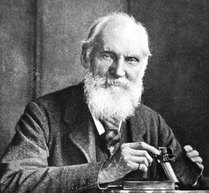 child prodigy, Thomson entered Glasgow University at the age of eleven. He went on to Cambridge, where he became renowned for his original thinking. On returning to Glasgow, he was appointed professor at the age of only twenty-two.
child prodigy, Thomson entered Glasgow University at the age of eleven. He went on to Cambridge, where he became renowned for his original thinking. On returning to Glasgow, he was appointed professor at the age of only twenty-two.
During his life Thomson was heaped with honors. He pioneered the laying of the first successful trans-Atlantic cable. This achievement caught the public imagination and for it he was knighted in 1866. In 1890, he was elected President of the Royal Society, the most prestigious scientific body in the country. In 1892, he was elevated to the peerage, becoming Lord Kelvin. In 1902, in recognition of his outstanding achievements in science, he became a founder member of the Order of Merit. This honor, one of the most exclusive conferred by the British Crown, is restricted to the Sovereign and twenty-four men and women of great eminence. On his death in 1907, Lord Kelvin was buried in Westminster Abbey, next to Sir Isaac Newton.
Kelvin made major contributions in many leading areas of science and technology. He is perhaps most famous today as a founding father of thermodynamics. He was responsible for defining absolute zero and the Kelvin scale of temperature that is named after him. With the help of other scientists, he formulated the law of conservation of energy and did pioneering work on the kinetic theory of gases. He also worked extensively in the field of electricity and magnetism, inventing several ingenious instruments which are still in use – including the mirror galvanometer, the dynamometer, and the magnetically-shielded ship’s compass.
It was a time of revolution. In Kelvin’s day, the fabric of society was changing more rapidly than ever before. Railways were carving into the countryside. The industrial revolution was in full swing and whole populations were migrating from the country into the mushrooming towns with their mills, factories and endless terraces of houses. Everyone was on the move, everything was changing. Established ideas about the world and even life itself were being turned upside down.
It was Kelvin’s destiny to challenge the established view of matter. His radical vision was in keeping with the revolutionary nature of his time.
In the 19th century it was generally accepted that matter consisted ultimately of atoms – solid, substantial particles. This idea of minute corpuscles of material had originated in the ancient world, in the teachings of the Greek philosophers Democritus and Epicurus, around 400 BC.
To understand the classical idea of the atom, imagine a lump of wood. A small piece is cut out of it. Then this piece itself is divided into smaller and smaller bits. The idea was that one would end up, ultimately, with a tiny piece of material that could not be divided any further. This final and most fundamental atom of matter was thought to be completely indestructible.
None of the writings of Democritus and Epicurus have survived. However their ideas were passed on by the Roman poet Lucretius (99-55 BC). Lost in the Dark Ages but rediscovered in the Renaissance, his work inspired the natural philosophers of the 17th and 18th centuries who laid the foundations of modern science. The most celebrated of them, Sir Isaac Newton, lent his authority to the corpuscular concept when he wrote, “It seems to me probable that God in the beginning formed matter in solid, hard, impenetrable, movable particles.”
This picture of the underlying nature of matter had a profound influence. It provided a view of a mechanical universe, composed solely of little particles in perpetual motion. The atoms themselves were thought of as tiny solid spheres, like minute billiard balls.
In the 19th century, the vast majority of scientists embraced this idea, which formed the bedrock of scientific materialism. Kelvin was a dissident. He was prepared to take on the entire scientific establishment of his day. His new vision of matter challenged the concept of the “billiard ball” atom. Kelvin believed in basic atomic theory. He accepted that everything was made up of atoms. However, he found it ridiculous to assume that atoms were solid material particles.
His reasoning was simple. At that time, atoms were thought to be substantial particles with certain fixed properties. Their properties were then used to explain the characteristics of matter as a whole.
For example, atoms were taken to be perfectly elastic, so that they could bounce off each other. Elastic collisions between atoms were vital to explain the behaviour of gases. However, nobody explained why atoms were elastic in the first place. Scientists simply assumed that elasticity was an inherent property of atoms. They took it for granted that that was the end of the story.
Kelvin found this attitude superficial and naive. He wanted to go further. Unlike his predecessors and contemporaries, he wasn’t prepared to take the properties of atoms for granted. Kelvin wanted to explain the properties of atoms in terms of something more fundamental.
The reality was that scientists could not account for anything about the atom. They could not say why atoms were permanent and stable. Nor did they understand how their other characteristics – such as elasticity – arose. They simply assumed that all these properties were basic attributes of the atom.
To Kelvin this was a “monstrous assumption”. He believed that the properties of atoms could be reduced to something more fundamental.
In 1867, Kelvin found the key. Having puzzled for many years, he was rewarded, according to his biographer, with “a flash of inspiration:. He saw that there was a simple explanation in terms of a single underlying principle.
Kelvin was sure that he had the answer. Moreover he had a simple way of demonstrating it. Today, physicists demand billions of dollars for equipment to demonstrate their ideas about the fundamental nature of matter. Kelvin’s apparatus consisted of a couple of boxes, two towels and a few flasks of chemicals.
One side of each box was closed by a stout towel stretched lightly across it. In the opposite side was a circular hole. Within each box, thick clouds of smoke were produced by mixing the vapours of an acid with ammonia. When a firm blow was struck on the towel, a circular smoke ring shot out from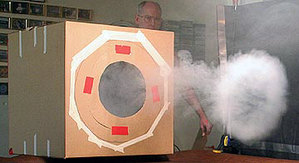 the hole on the opposite side. Smoke rings could be blown out simultaneously from the two boxes.
the hole on the opposite side. Smoke rings could be blown out simultaneously from the two boxes.
These rings behaved quite remarkably. On hitting each other, they didn’t merge or break up, as one might expect. Instead, as they sped across the room and collided, they bounced off each other, shaking violently from the shock of the impact. It was as if they were two rubber rings, striking one another in the air. Insubstantial whirls of smoke were behaving as if they were substantial objects. They couldn’t even be cut with a knife; they simply moved away from the blade, or wriggled around it.
This demonstration was central to Kelvin’s startling new vision of matter. It showed that two smoke rings acted on each other much like elastic objects. These smoke rings had many of the properties attributed to atoms. They exhibited resilience and inertia. They were surprisingly stable and durable. At the same time, they were elastic.
Kelvin pointed out that these vortex rings of smoke behaved just like atoms. They gave the appearance of being quite substantial. But this apparent solidity was an illusion which came from vortex spin.
Kelvin concluded that atoms were nothing more nor less than vortex rings. Thus he gave birth to the vortex atom.
In Kelvin’s view, all the properties of atoms stemmed from vortex spin. Their substantiality was a masquerade. It was movement in a vortex that gave rise to the illusion of material.
Kelvin’s vision of the atom as a vortex was brilliant. In a single stroke, it rendered obsolete the whole tradition of the atom as the ultimate little bit of material. The ultimate particles of matter, far from being solid and substantial, were merely vortices.
Kelvin’s vortex theory became outstandingly successful. But he did have problems to overcome.
The first concerned the permanence of matter. Vortices are common throughout the natural world. Tornadoes, hurricanes and whirlpools are examples. Fast-spinning vortices are remarkably persistent forms; even slow-moving, smoke rings have surprising durability. But in nature, vortices don’t last forever. They dissipate and eventually die away.
Matter, however, is stable; it doesn’t just fall apart and dissolve away. Atoms are forever. If vortices were to be the basis of matter, they would have to be permanent. The motion forming them would have to continue unchanged, indefinitely. How was this perpetual motion possible?
Then there was another question. Vortices normally occur in fluids. Hurricanes are in the air and tidal whirlpools are in water. What was the atom a vortex in?
There was a single, obvious answer to both these questions. The vital clue came from a German physicist called Herman von Helmholtz (1821-1894). A few years earlier Helmholtz was studying vortices in liquids when he came up with an amazing discovery. It was very simple: if the liquid was frictionless, the vortices would not disintegrate or die away; they would last forever.
Kelvin was a friend of Helmholtz; they had worked together in the past. When Kelvin learnt of Helmholtz’ discovery, he was immensely excited. He realised at once that the permanence of the atom could stem from endless vortex motion in a frictionless fluid.
It had long been believed in physics that the universe was filled with exactly such a frictionless fluid – the aether. The aether was thought of as a subtle, invisible substance pervading everything, even empty space.
In Kelvin’s day, the existence of the aether was vital to explain light. Light was regarded as waves and a wave, it was argued, had to be a wave in something. Waves in the sea are movements of water. If light was a wave, there must be some underlying substance moving. This hypothetical substance, filling the whole of space and even permeating solid matter, was the aether.
Kelvin realised that he could put forward a unified theory of matter and light, explaining them both in terms of the aether. He could account for the entire physical universe simply in terms of waves and vortices. Light was a wave motion in the aether, while matter was a vortex motion.
The vortex atom came in with a bang. From his historic lecture in 1867 came Kelvin’s first paper on vortex atoms. Later that year, again at the Royal Society of Edinburgh, he presented a mathematical dissertation on vortex motion. Kelvin went on to advocate the vortex atom for most of his professional life.
The vortex quickly attracted the support of major British scientists. Many became convinced that it was the key to understanding matter. Within a very few years, the idea of the vortex became firmly established. A whole school of British physics grew up around the vortex atom, centered in the universities of London and Cambridge. Many notable physicists worked in this field, building up a mathematical picture of the vortex atom and its interactions.
The year 1875 was a landmark in popular acceptance of the vortex. The new edition of the Encyclopaedia Britannica devoted two entire pages to Kelvin’s vortex. Its entry on The Atom reviewed the whole history of atomic ideas, including the previous picture of a “small, hard body imagined by Lucretius, and endorsed by Newton.” The article concluded that the vortex theory was far superior to any of its predecessors, stating:
…the vortex ring of Helmholtz, imagined as the true form of the atom by Thomson, satisfies more of the conditions than any atom hitherto imagined.
The author of this article was none other than James Clerk Maxwell (1831-1879); himself a giant of 19th century physics. Maxwell was another Scottish child prodigy. One of his papers was published by the Royal Society when he was only fifteen. Ten years later, at twenty-five, he was appointed professor at the university of Aberdeen. He went on to become the first ever professor of experimental physics at Cambridge, where he established the now famous Cavendish laboratory.
Maxwell was one of the greatest geniuses of the 19th century. He is most celebrated for his development of electromagnetic theory – without which there would be no television, radio or radar. 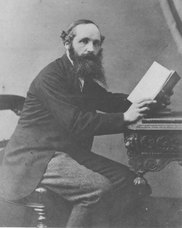 Probably the leading mathematical physicist of the 19th century, his grasp of this subject was so fundamental that his equations have survived intact to this day.
Probably the leading mathematical physicist of the 19th century, his grasp of this subject was so fundamental that his equations have survived intact to this day.
Maxwell was a major advocate of the vortex. He was convinced that it was by far the best explanation for matter that had ever been put forward.
Another celebrated scientist who championed the vortex atom was Sir JJ Thomson (1856-1940). Twenty-five years younger, JJ Thomson followed in Maxwell’s footsteps as professor of experimental physics at Cambridge. Through his work, he made the Cavendish the greatest experimental physics laboratory in the world. Like his namesake Lord Kelvin, JJ Thomson was extensively honored. He was President of the Royal Society, was knighted for his contributions to science, and was admitted to the Order of Merit. Eventually, like Kelvin, he was buried in Westminster Abbey.
Sir JJ Thomson is famous for his discovery of the electron, the basis of electricity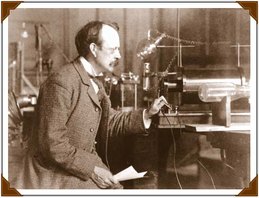 , electronics and computers. In 1882, whilst still a promising young man at Cambridge, he won the Adams prize with a paper on the motion of vortex rings. This essay gave a detailed mathematical treatment of the vortex. It also indicated how chemical reactions could be explained in terms of the vortex atom. In his paper, JJ Thomson said of the vortex atom that it
, electronics and computers. In 1882, whilst still a promising young man at Cambridge, he won the Adams prize with a paper on the motion of vortex rings. This essay gave a detailed mathematical treatment of the vortex. It also indicated how chemical reactions could be explained in terms of the vortex atom. In his paper, JJ Thomson said of the vortex atom that it
…has a priori very strong recommendations in its favour…the vortex theory of matter is of a much more fundamental character than the ordinary solid particle theory.
JJ Thomson published several further papers on the vortex and continued to endorse vortex theories for over a quarter of a century.
Kelvin’s original picture of the vortex atom evolved considerably over the years. During the last decades of the century, different groups of physicists developed several alternative models in considerable mathematical detail. They looked to the vortex to provide a single model capable of explaining everything that was then known in physics and chemistry.
With the 20th century everything changed. This vibrant school of British physics came to a sudden end. Explosions in the fabric of science rocked it to its very foundations. The atom was split and the idea of the aether was dying. The atom came under new, intense scrutiny, and all existing ideas about it proved to be completely inadequate.
The vortex idea, with all its enormous potential, was thrown away along with the moribund billiard ball model. But the baby was chucked out with the bath water. It is time to look again at the vortex. Today, in the light of everything that has been discovered, this forgotten principle could provide a completely new foundation for science.
On a summer morning in 1945 an atomic bomb exploded over Hiroshima. This was a terrible demonstration for mankind of the enormous power locked up in the atom. In this atomic explosion, less than an ounce of matter had been transformed into sufficient energy to destroy the entire city.
Albert Einstein, forty years earlier, was responsible for the breakthrough which made the atom bomb possible. By showing that matter was equivalent to energy, he paved the way for both the atomic bomb and nuclear power.
This is the most crucial scientific discovery of the century. But the equivalence of matter and energy is baffling. It is the greatest enigma of 20th century physics. Modern physics is still grappling to understand precisely what matter is and why it appears to be interchangeable with energy. How can matter, seemingly so static, be a form of energy, which is intrinsically dynamic?
Only a few years after Einstein’s discovery, the atom itself came under attack. Physicists killed off the traditional idea of the atom as the smallest indivisible piece of matter. The billiard ball atom was shattered. The atom was found to be made up of much smaller, sub-atomic particles.
Today, the atom, so far from being seen as a solid indestructible mass, is known to be largely empty space. It consists of Sir JJ Thomson’s tiny electrons orbiting a central nucleus made up of further particles. It would be tempting to imagine that these elementary particles are themselves solid billiard ball-like objects. But modern physics has shown quite clearly that they are destructible and can be totally transformed into energy.
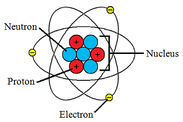 The traditional notion that matter is made up of indestructible material particles is obviously false. But the question then is, just what are elementary particles? And how can they be forms energy? For most of this century, physics has been puzzling over these problems.
The traditional notion that matter is made up of indestructible material particles is obviously false. But the question then is, just what are elementary particles? And how can they be forms energy? For most of this century, physics has been puzzling over these problems.
Kelvin’s vortex provides the answer. The vortex is the key to understanding the precise structure of particles, and how energy is locked up in them.
To Lord Kelvin and his contemporaries, the atom was the elementary particle – the smallest particle of matter. It was natural, therefore, that he applied his vortex model to the atom.
Today, however, sub-atomic particles are taken to be the smallest bits of matter. If Kelvin were alive now, he would seek to explain particles, not atoms. He would be publishing papers on vortex particles, not on vortex atoms!
In 1884, Kelvin gave a famous series of lectures in America on the wave theory of light. In his day, it was thought that light consisted of waves in the aether – the invisible substance supposed to pervade all space. Kelvin, like his contemporaries, believed in the aether. It is logical therefore that he took atoms to be vortices in the aether.
Later, however, physicists came to view light very differently. The underlying sea of aether was completely dismissed. Physicists came to accept that waves of energy could exist with no underlying material to move. Waves could exist without the ocean – like the grin on the face of the Cheshire cat which stayed behind even after the cat had vanished.
A vortex theory today has no need of the aether; indeed any mention of the aether w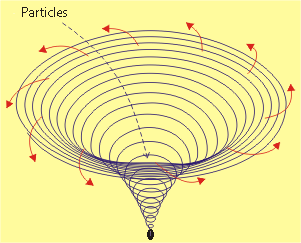 ould be scientific suicide. A claim that particles were vortices in the aether would be taken as ludicrous. But if you can have a wave of pure energy, why not a vortex of pure energy? Kelvin was so close. He was after all a founding father of thermodynamics, the science of energy. If only he had talked about energy, not aether! His theory would then make perfect sense today. Its foundation would be:
ould be scientific suicide. A claim that particles were vortices in the aether would be taken as ludicrous. But if you can have a wave of pure energy, why not a vortex of pure energy? Kelvin was so close. He was after all a founding father of thermodynamics, the science of energy. If only he had talked about energy, not aether! His theory would then make perfect sense today. Its foundation would be:
an elementary particle is a vortex of energy.
This is a simple idea. But it has immense power. If the elementary particle is a vortex of energy, our understanding of the world would be completely transformed.
Posted in Infinite Concept of Cosmic Creation, Science For The New Agewith comments disabled.


